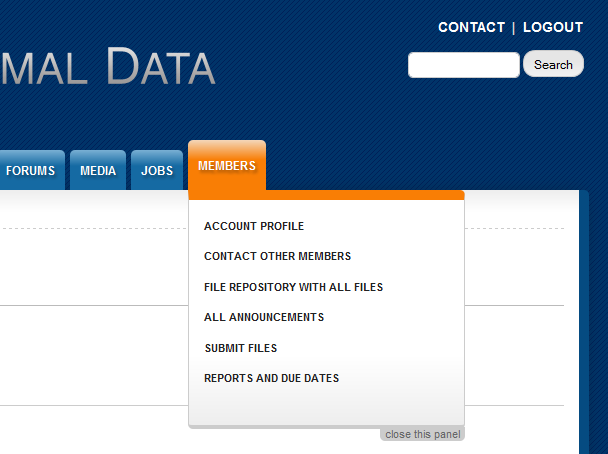Submitting Data
After you have prepared your data for submission by entering it into the template spreadsheet of a content model, you may submit your data through the AASG Geothermal Data website.
- Login: Click Login in the upper right hand corner of the AASG Geothermal Data website (Figure 5). Enter your username and password in the login window that appears. Alternatively, you may login via established electronic mail providers such as Gmail, AOL, and OpenID. To do so, simply click the appropriate icon at the bottom of the Login window and enter the username and password you normally use for that provider; your provider will then log you in to AASG Geothermal Data

Figure 5: Logging in to AASG Geothermal Data
- Submit your data: Mouse over the Members menu and click Submit Files (Figure 6). This will bring you a Submission page (Figure 7) on which you will provide detailed information about the data you wish to submit. Required fields are indicated by a red asterisk (*). Click the Save button, or click Preview to see what your data will look like when submitted

Figure 6 The Members menu
- Wait for feedback: Someone at the Arizona Geological Survey will review your data and let you know whether or not it needs to be revised. If your data needs to be revised, it will be returned to you and you may resubmit it for review
If your data is approved and does not need to be revised, the following steps need to be taken:
- Provide the AZGS with a metadata record for your data using the USGIN Metadata Wizard. If your data is being served as a service, you will need to provide the AZGS with a metadata record for the service, as well as for the data
Figure 7: The Submission page
- Get your data online. If your data is a deliverable (for example, a completed content model), it will need to be uploaded to the USGIN document repository. If your data is going to be hosted as a service, this can be accomplished in one of the following ways:
- If you are hosting your own data, you will need to mobilize sufficient computing resources
- If you are a California or Arizona subrecipient, AZGS will host your data as a service
- If you are a subrecipient in any other state, AZGS will notify your state of the fact that your data has been approved, and they will host your data as a service
This concludes the USGIN Content Model Tutorial.
More information about the importance of content models and schemas can be found here.
